(Listen to the radio version here.)
In 2005, when Russ and I had three kids in college and I suddenly needed an actual paying job, one fell in my lap—a local optics company hired me full time to write a blog. My name would be associated with the company, and I would write a few reviews of equipment, but I focused my day-to-day posts on birds. On my first day, the blog designer asked me for a short, pithy slogan, which he needed immediately. Within a few minutes I came up with “For the love, understanding, and protection of birds,” which pretty much defines my life’s work.
For the love, understanding, and protection of birds
The company was internet-based, so I was supposed to make the blog of national and even international interest. That was the year we were immersed in the biggest Great Gray Owl irruption ever up here, a subject of interest all over. But I needed to stretch my awareness of birds throughout the continent and the world. When I started reading up on Caribbean bird conservation and saw the renowned British bird guide Pete Morris’s pictures of the Cuban Tody, I was utterly smitten. Of course, there was no way I could go to Cuba, but Morris graciously gave me permission to use his splendid photo in my blog, promoting conservation of Caribbean birds.
For more than a decade, I blathered on and on about how I yearned to see that tiny, objectively adorable bird. When we remodeled our bathroom in 2012 to make it accessible when my mother-in-law moved in, I commissioned Port Wing, Wisconsin, artist Jeannie Perry to paint birds on seven tiles, one a Cuban Tody.
For a time, if you googled “Most adorable bird in the universe,” the first page you got was from one of my blog posts about the Cuban Tody.
It really does live up to those words, but unless you’re an ornithologist or know enough Latin to recognize that todus means a small bird, you would likely have trouble looking up the word “tody,” because its homophone is in much more common use. I asked my iPhone what a tody is, and Siri said, “Tody means a person who behaves obsequiously to someone important.” When I asked her how to spell tody, she responded, “T-O-A-D-Y.” Every time I write the word in Microsoft Word, it underlines it as a misspelling, suggesting toddy, today, tidy, and toady, spelled that other way.
That would be all well and good if I wanted to write about sycophants, which are plenty abundant in Elon Musk’s world, but “tody” in my world is spelled T-O-D-Y, and refers to a bird in family Todidae, in the order that includes kingfishers and motmots. Todidae includes just one genus, Todus, with five species, all found only in the Greater Antilles, each endemic to one island. There is one tody each on the islands of Cuba, Puerto Rico, and Jamaica, and two todies on Hispaniola. This being my Golden Anniversary year of birding, Russ and I are hoping to get to at least one or two, and maybe all three, other Caribbean islands before the year is out—wouldn’t it be cool to make 2025 the year of the Tody Sweep?
All five todies have bright green on the crown, back, and tail, a brilliant red throat, and a pale underside, but each has a unique combination of pink, baby blue, and/or yellow. Only the Cuban Tody features all three of those colors, so its scientific name is Todus multicolor. The tiny size and red throat call to mind hummingbirds, but unlike hummingbirds, tody feathers are soft, the colors rich and shiny but not iridescent.
Back in 2015, when I had my first heart attack and Russ was driving me to the hospital, I was in a Zen-like state, a string of happy thoughts running through my brain about my family and all the splendid birds I’d seen over what has been a very happy life. But poor Russ could not get out of his head the thought, “What if she dies and she’s never seen a Cuban Tody?”
So at the beginning of 2016, when Zeiss and the company formerly known as Eagle Optics announced a trip to Cuba that coming October, Russ encouraged me to sign up. There were so many great birds to see—the stunning Cuban Trogon, the minuscule Bee Hummingbird, the flamboyant Red-legged Thrush.
Over a third of the 117 birds I saw were lifers, but the one bird I was fixated on throughout the months of anticipation and then the actual trip was that chickadee-sized Cuban Tody.
Sometimes when we yearn to see something that bad, the anticipation exceeds the actual event. That sort of happened with the Bee Hummingbird. It’s the tiniest bird in the known universe, and I wanted to see one long before I’d even heard of the Cuban Tody. But it feeds in the upper canopy in forested areas, so is very difficult to find at all except at feeding stations. Right now, people in Cuba are much too poor to spend their limited money on sugar except where birder contributions cover the expense, so hummingbird feeding stations are few and far between. We visited one in October 2016 and did see a few Bee Hummingbirds, but their fall plumage was dull and the day was murky.
This time around, some of the Bee Hummingbirds were done molting back into spring plumage—they took my breath away!
Both in 2016 and 2025, the Cuban Todies lived up to every hope and dream I’d conjured in my imagination. They really do appear to be the most adorable bird in the universe. On my first trip to Cuba I took as many photos as I could, but we weren’t given much time to savor even the most spectacular birds. This time our guides, Maikel Cañizares and Abel Luis, didn’t keep pressing us to move on to the next place, though oddly enough we saw about 30 species more than we did the first time.
I saw my favorite tody of all near the very last place we stayed. After we checked in late in the afternoon, I took a walk and found an amazingly cooperative little guy. The next morning, I went out at dawn to enjoy it before our group went out, and again when we got back at day’s end, too. I’d seen and photographed lots of todies throughout the trip, but that one, the last one I got good looks at on the whole trip, was special—it seemed to be bidding me farewell. I’ll savor my photos for a long time to come.





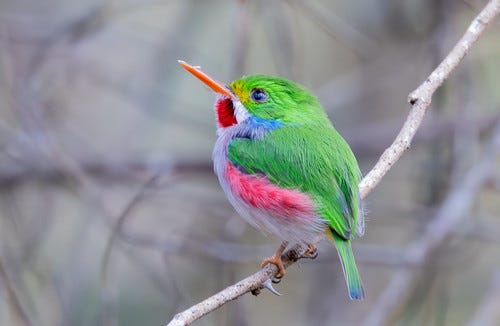
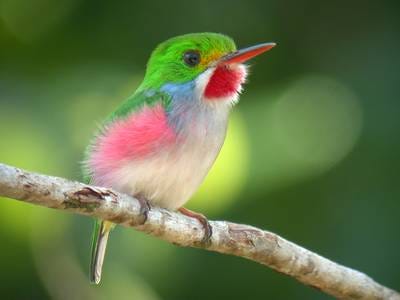
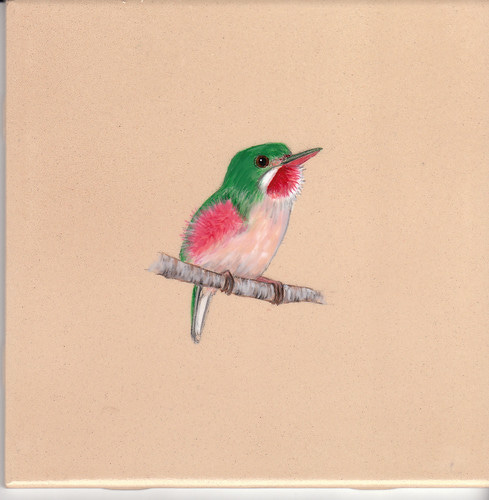
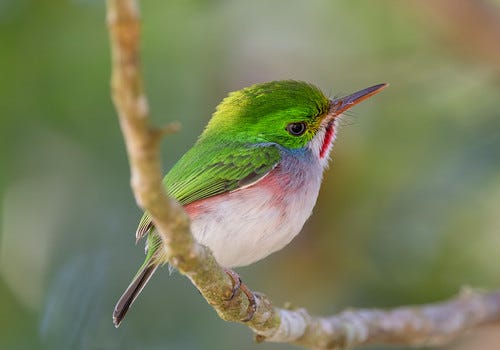


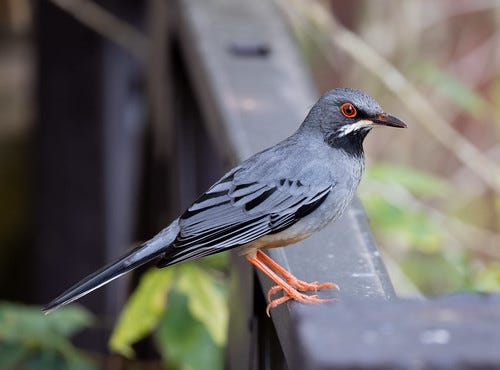

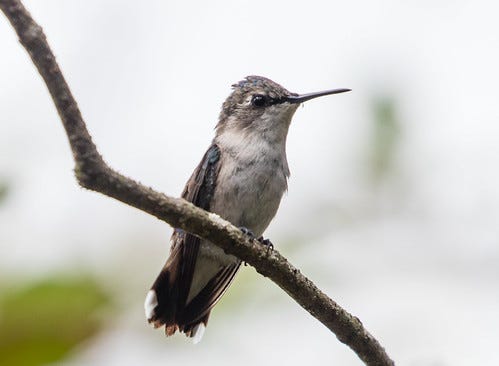
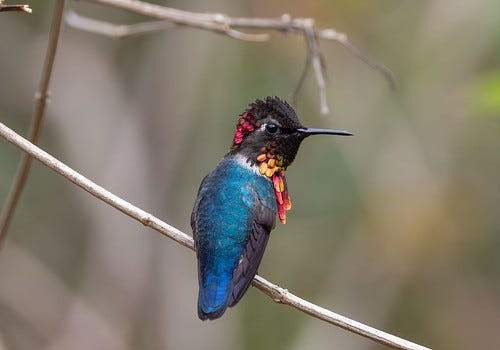
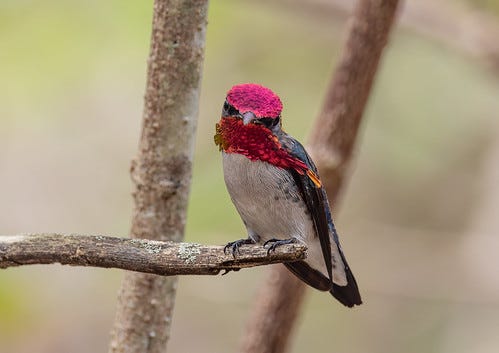


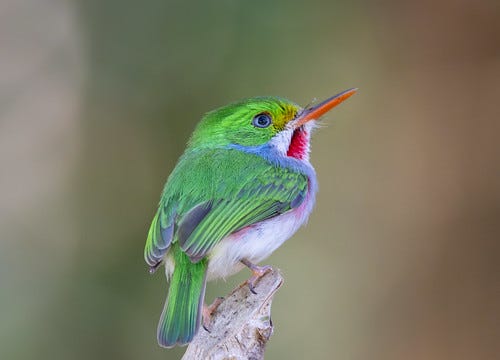
Everything about this post is wonderful: your writing, your photos, and the todies themselves, of course! Your slogan, "For the love, understanding, and protection of birds" reminds me of the National Aviary's mission statement: To inspire respect for nature through an appreciation of birds. Keeping it simple! :)
I do agree with you about the status of the Cuban Tody as "the world's most adorable bird," despite never having seen one myself. I think it must be the combination of usual "cute" baby-like proportions, i.e., large head, small body; but, there are lots of other birds that have similar proportions. In the tody, though, the long narrow bill and its positively juicy coloration totally put an exclamation mark on its borbiness! My colleague at the National Aviary, Steve Latta, co-authored a field guide to the birds of the Dominican Republic and Haiti which has a nice illustration of Narrow-billed Tody on the cover. Thank you for the bright spot in my day today!!
Wow! So glad you got those priceless pics of the Cuban Tody and the Bee Hummingbird! That was also precious to hear what Russ was thinking while taking you to the hospital!!